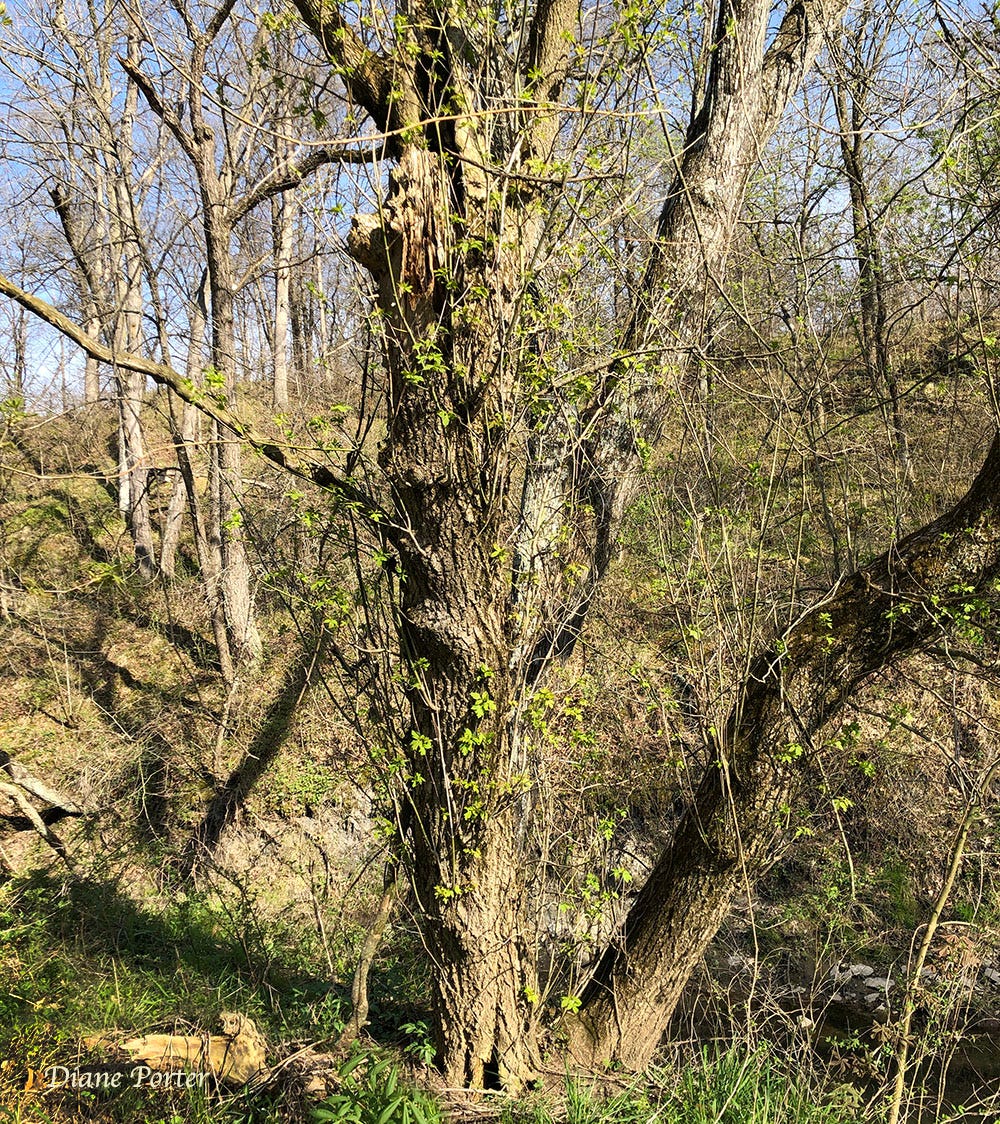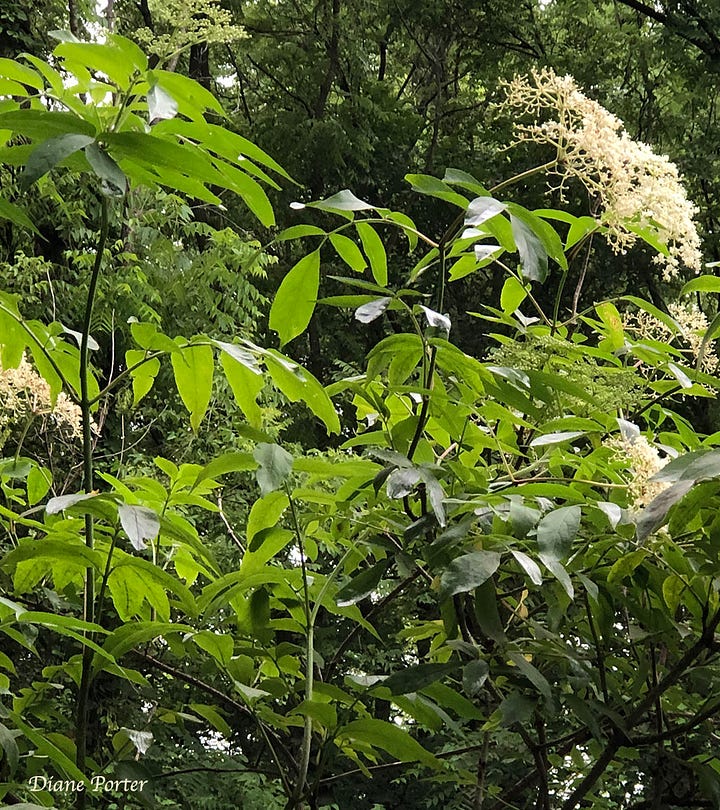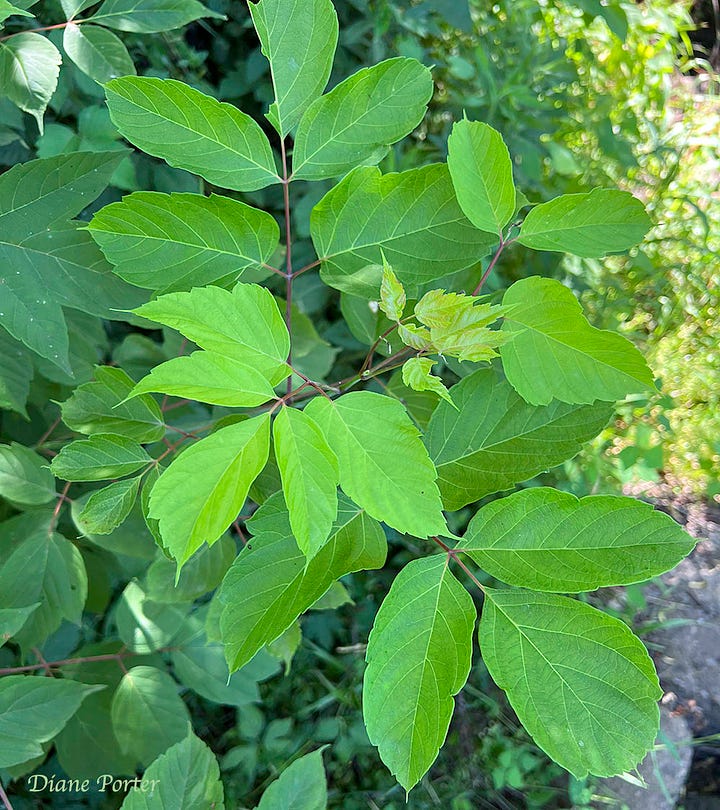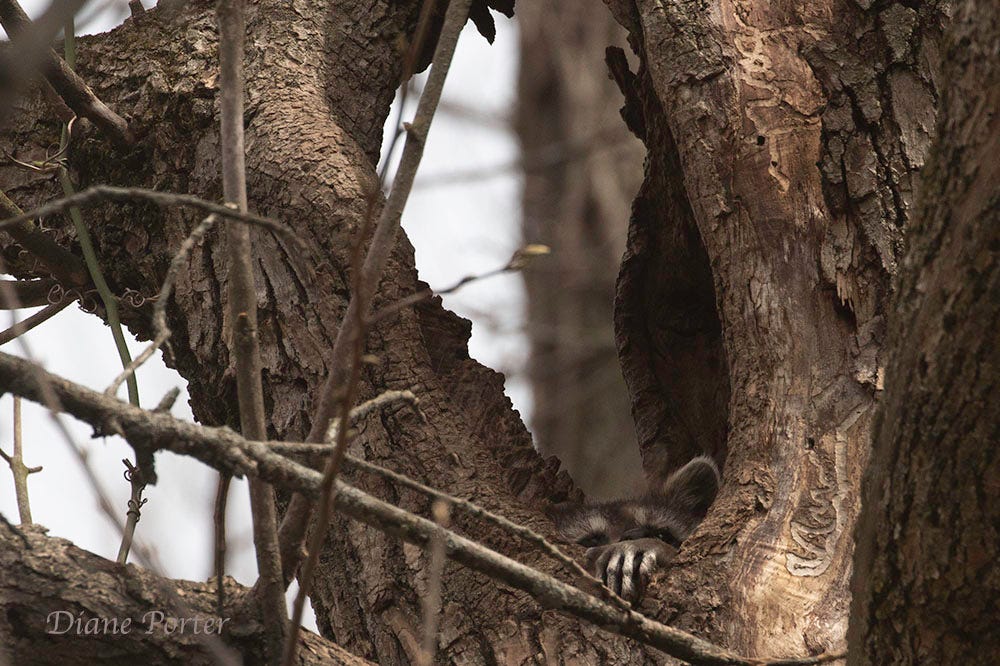

Discover more from My Gaia
Raccoon takes a quick look as I walk by and then sinks out of sight. The temps are hovering around 0 degrees F. Maybe it’s wise to stay snuggled down in the hollow tree until things warm up a bit.
Box Elders are native trees throughout most of North America. They are not beloved in town backyards, because they’re lumpy, they break easily, and they die young. The raccoon’s Box Elder in my woods is an absolute wreck.

But that messy quality makes Box Elders wonderful for wildlife. As they age and start to fall apart, they form holes for raccoons, owls, woodpeckers, and several species of bats. Great for shelter and raising young.
Box Elders also host insects, especially caterpillars, that feed nesting birds. If it gives you joy to see tanagers, warblers, and vireos in spring, then you’ll have happy moments by sharing space with Box Elders.
Box Elders (Acer negundo) are not actually elder trees. They’re in the maple family. The word “elder” in the name comes from the appearance of the leaves, which are compound and look slightly like those of true elders, such as the Elderberry (Sambucus canadensis). The resemblance lies in their smooth surface and compound structure, with leaflets going off symmetrically to left and right, with a single terminal leaflet (at the end).


Out in the woods this tree does a world of good and no harm, so I treasure it. And I give a wave to the raccoon as it slips down into the hollow trunk.
Comment by clicking the “thought bubble” icon below.





Thanks for explaining the use of Elder for this tree in the Maple family.
I hope that as this elder ages and falls apart, I will provide great shelter for . . . something!
Brave little raccoon to let himself be seen. When they do stay sturdy long enough to be some size, the box elders, like other maples, can be tapped for sap to make syrup. But you are right, most do not have a long and healthy life but they are desirable to have in ones woodland for all the reasons you gave.